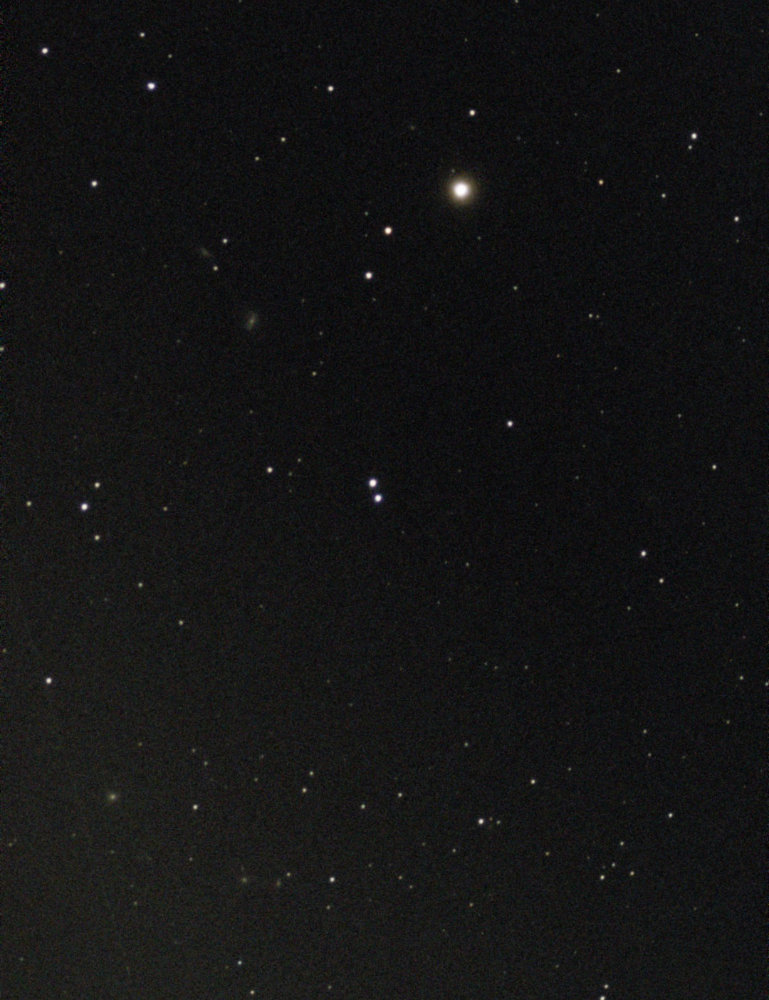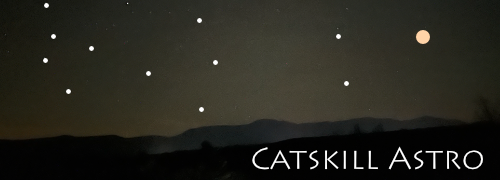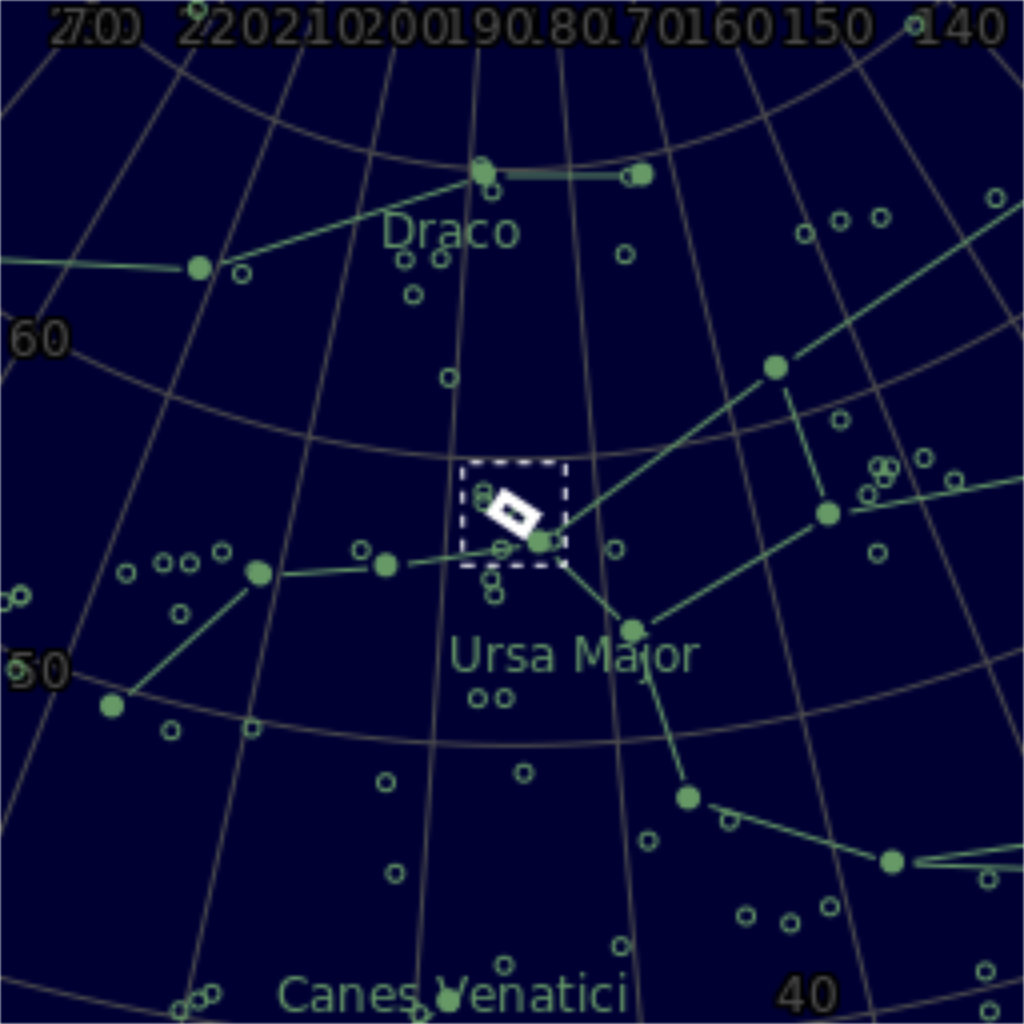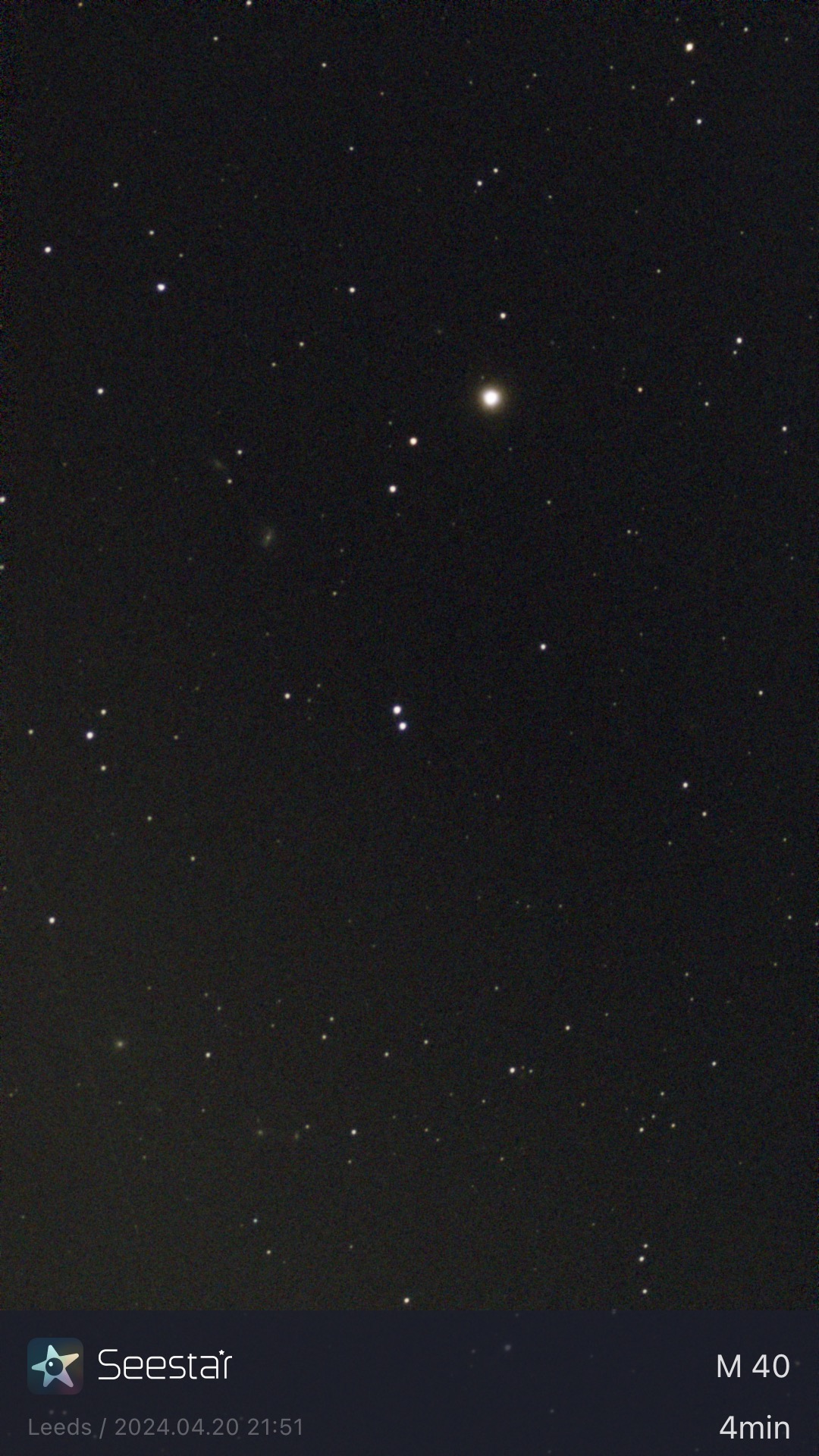| Description | This is the only double star in the Messier catalog, now credited to Messier (#18) and recorded on October 24, 1764. Messier's own motivation was to confirm the observations of Johann Hevelius, the influential 17th century astronomer from Danzig (Gdańsk), in the Polish–Lithuanian Commonwealth. Hevelius had invented many celestial cartographic conventions, and no doubt heavily influenced Messier's own comet map-making. As Messier wrote, "I searched for the nebula above the tail of the Great Bear.... I have found, by means of this position, two stars very near to each other & of equal brightness, about the 9th magnitude, placed at the beginning of the tail of Ursa Major.... There is reason to presume that Hevelius mistook these two stars for a nebula." <--> This was my fifth capture of a strange evening when it rained right up to the moment it cleared around 9 PM. Because of the 93% moon, I had planned to capture a number of Messier objects, mostly clusters, and decided to observe with the Seestar. This is an "optical" double, two stars that just happen to appear close together from Earth's vantage point. |





